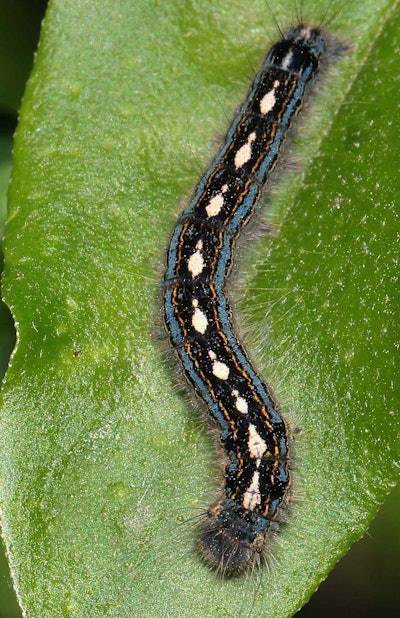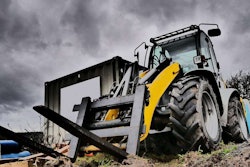
 Photo: Judy Gallagher/Flickr
Photo: Judy Gallagher/FlickrThere are still a few months standing between us and winter, which gives creepy crawlies like forest tent caterpillars (Malacosoma disstria) enough time to stir up some more trouble.
Forest tent caterpillars are native insects that are serious defoliators and are univoltine, which means they only produce one generation per year throughout their range.
In 2016, the state of Vermont reported that the forest tent caterpillar significantly reduced tree growth and impacted the maple tapping operations for Vermont sugar makers.
According to Vermont’s Agency of Natural Resources, forest tent caterpillars favor eating the leaves of sugar maples and ash trees, and in 2016 they defoliated 25,000 acres of forestland in the state.
A few other deciduous hosts include oak, maple, poplars, elm, ash, birch and more.
For 2016 and 2017 in Rhode Island and Connecticut, forest tent caterpillars have already been found and have defoliated many acres. Researchers at the Ecological Landscape Alliance believe that the 2014-2016 droughts may have been large contributors to the high number of forest tent caterpillars in these areas.
About forest tent caterpillars
Bearing a striking resemblance to the eastern tent caterpillar while in its larval stage, forest tent caterpillars do not make noticeable webs. Even though they don’t build these webs, also called tents, they will construct silken mats where they will congregate as a group.
These congregations will begin at the top of the tree, but later they are more commonly found lower in the crown and on the trunk.
As larvae, they will climb higher in their host trees and are more dispersed throughout. During the larval stage, they will be predominately black, but with each molt they experience, pale blue markings will appear along the sides of the brownish body, as well as a row of footprint-shaped, whitish spots on a black background.
Once full grown, the caterpillars will reach about 2 inches long. The caterpillars will hatch in late April or early May, at the peak of budding, and pupation will begin in mid to late spring.
Adult moths will begin to appear about 10 days after the caterpillars spin their cocoons. These moths are buff colored with a wingspan of 1 to 1 ½ inches.
How to manage them
If you find your customers dealing with an influx of forest tent caterpillars, there are a few methods that can be used to get rid of them.
For customers who may not want to use pesticides on their landscape, consider removing and destroying the egg masses from the trees during winter. Removing the cocoons during summer can also help cut down on the population without using chemicals.
Webs can be removed in spring by a heavy spray of water, by hand or by using objects such as broom handles or sticks, and the caterpillars can be dropped into a bucket of soapy water as an easy at-home killing solution.
In times of heavy infestation, chemical treatments can be used, but ornamental fruit trees and shrubs should be prioritized, as many larger deciduous trees will recover after feeding.










